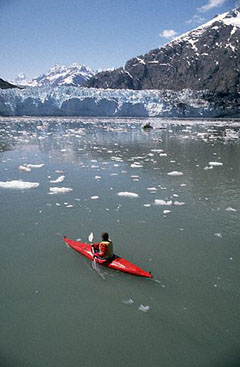|
Embark on an unforgettable full-day Glacier Bay cruise adventure, a true highlight of Alaskan cruises. This breathtaking Glacier Bay cruise from Juneau immerses you in the rich history and natural splendor of Glacier Bay. Your day begins with a scenic flight from Juneau to Gustavus, where you'll board a catamaran for a full-day cruise into the magnificent west arm of Glacier Bay. Glacier Bay was first charted in 1794 by Captain George Vancouver's team aboard the H.M.S. Discovery. Witness a landscape that has dramatically transformed since Vancouver's initial survey revealed just a small shoreline indentation. Marvel at the vastness of this glacial area, which once spanned over 100 miles to the St. Elias Mountains, with a thickness exceeding 4,000 feet and a width of 20 miles. In 1879, renowned naturalist John Muir unveiled a significant retreat of these glaciers, revealing over 30 miles of new bay formation. Today, Glacier Bay National Park is a sanctuary of awe-inspiring tidewater glaciers, some actively carving icebergs into the bay's pristine waters. The majestic Mount Fairweather towers above, reaching over 15,000 feet, surrounded by peaks soaring from sea level to heights surpassing 6,500 feet. This Glacier Bay cruise offers a unique vantage point aboard a swift catamaran, perfect for observing the diverse wildlife that calls this region home. From whales and bears to mountain goats, moose, and an array of birds, each moment of your journey brings you closer to the heart of Glacier Bay's unparalleled wilderness. Experience the essence of Alaska's natural beauty and historical grandeur on this once-in-a-lifetime Glacier Bay day tour from Juneau.
|
GBP#01 Full Day Glacier Bay Tour - Glacier Bay Day Cruise
Tour Itinerary
Glacier Bay National Park FAQ
|
Day
01 |
 |
Juneau - Gustavus / Glacier Bay National Park The catamaran's high speed enables us to explore the entire length of the West Arm of Glacier Bay to the face of Margerie and Grand Pacific glaciers, two of several tidewater glaciers in the park. Along the way, as you watch for wildlife and birds, you'll notice the transition of plant life from the lush, mature evergreen forest near the lodge, to younger alder and willow growth, to the recently uncovered bare rock dotted with primitive lichens and mosses at the faces of the retreating glaciers. Watch for giant towers of ice to "calve" away from the face of a glacier and tumble into the water. Observe the parks wildlife: bears, moose, and mountain goats; a variety of sea birds; three species of whales - humpback, orca and minke; harbor seals and sea lions. The catamaran features open top-deck viewing as well as comfortable interior seating, and large picture windows all around on both enclosed decks so you won't miss a thing. The cruise is planned with plenty of time for wildlife watching. To add information and perspective, a National Park Service ranger accompanies the cruise as narrator/interpreter for the day. The day cruise includes lunch, along with hot cocoa, tea and coffee. After your day of glacier and wildlife viewing, return to Bartlett Cove for you flight back to Juneau. A perfect combination for travelers with a limited amount of time. |
| Rates in US $ (Season: May 24 - September 02) | per Adult | per Child |
| May 24 - May 31 | $920.00 | $750.00 |
| June 01 - August 29 | $860.00 | $690.00 |
| August 30 - September 02 | $920.00 | $750.00 |
|
| Rates in US $ / per Person (+ tax) | Single | Double | Triple | Quad | Child |
| May 23 - September 07 - Standard | $ 180.00 | $ 95.00 | $ 67.00 | $ 58.00 | $ 10.00 |
| May 23 - September 07 - Superior | $ 230.00 | $ 115.00 | $ 83.00 | $ 78.00 | $ 10.00 |
 |
|||||||||||||||||||||||||||||||||||||||||||||||||||
Glacier BayNational Park - FAQ
|
|||||||||||||||||||||||||||||||||||||||||||||||||||